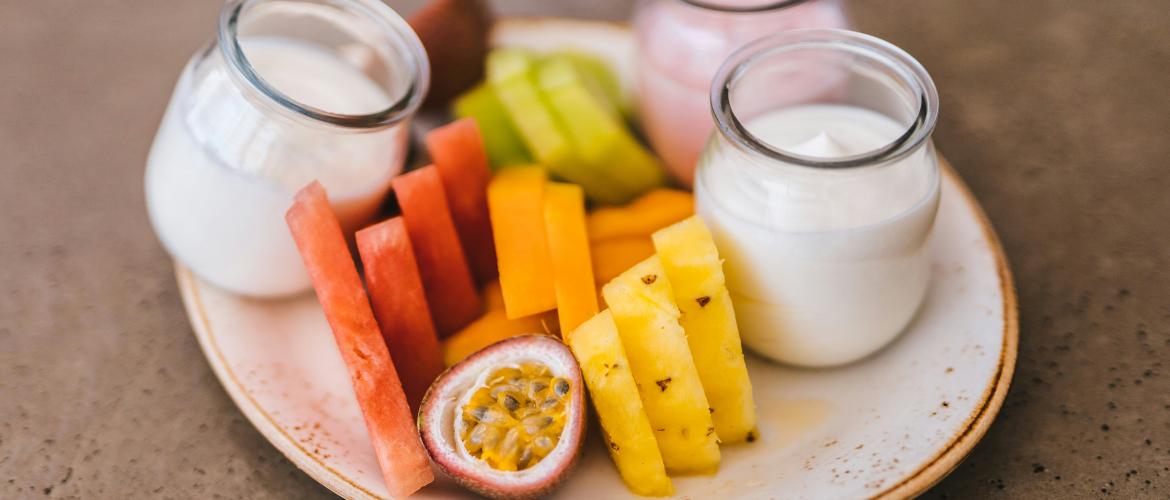
Nutritious snacks for people living with dementia
Challenges with eating and taking on enough nutrients can be amongst the unexpected side effects for people living with dementia. While this can be distressing for loved ones and carers, there are a number of strategies that can help to manage the situation.
One of the approaches that’s recommended is to increase the opportunity to snack, as smaller portions can boost food intake for those who struggle to concentrate at mealtimes. Making eating less formal in this way can help prevent weight loss in those living with dementia and minimise what can be a stressful situation.
To ensure snacks are delivering the nutrients and calories needed, it’s important to consider them carefully. This involves preparing a variety of options that not only appeal to the individual but also caters to each of the food groups, constituting a balanced diet.
High-energy snacks
When it’s difficult to encourage people living with dementia to eat, maximising the energy they get from snacks is vital. This is called a food first approach and means enriching items with additional nutrients and calories to up their energy density.
Simple ways to put this into practice include serving full fat and sugary options instead of the reduced alternatives. So reach for cream, full fat milk and butter when preparing food for people living with dementia, not spreads or low fat yoghurts.
You can enrich foods further by adding in extra ingredients your loved one will be keen to eat. This could be extra cream to a custard pot, butter to mashed potato or cheese to a rice cake, all of which will add calories.
High-energy snacks that can be popular with people living with dementia include:
- Flapjacks packed with lots of dried fruit, nuts and oats for slow-release energy.
- Toast with real butter and jam, which is cut into pieces easily eaten with their fingers.
- Custard pots or mousse with extra cream added in.
- Hard boiled eggs, which contain protein and healthy fat, as well as offering an alternative texture to crunchy snacks.
Colourful snacks
If a person living with dementia seems uninterested in food, then making it as appealing as possible is crucial. One way to do this is to include colourful foods on a plain plate, so they can see what they’re eating.
Fruits and vegetables are often colourful and nutritious, with their hues hinting at the properties found inside. For example, red foods are likely to contain antioxidants such as lycopene, yellow items have carotenoids including beta-carotene and beta-cryptoxanthin, while purple foods are made up of anthocyanins.
Each of these compounds have benefits to the human body, helping with everything from lowering blood pressure to protecting cells from damage. A good mix of colours can therefore help to ensure a person living with dementia is getting the nutrients they need.
Snacks that incorporate colourful ingredients include:
- Crudites - vegetables cut into sticks - served with beetroot hummus.
- Dried apricots or mango, depending on how well the individual can chew and if they wear dentures.
- Frozen berries and ice lollies made from real fruit can make appealing snacks during warm periods, increasing fluid intake, as well as nutrients.
Pureed or blended snacks
People living with dementia can experience problems chewing and swallowing for a variety of reasons. These include forgetting to swallow, keeping food in their mouths for a long time and trouble using the muscles needed to masticate.
This can lead to food being pureed or blended to ensure the intake of enough nutrients. Like many areas of food preparation, the way this is carried out can make it more or less appealing. Whole meals should not be pureed together to create a brown substance, but individual elements pureed then presented on a plate using a piping bag or food moulds.
Blended snacks for people living with dementia include:
- Brightly-coloured smoothies made using their favourite fruits, yogurt for extra nutrition and oats as a source of water-soluble fibre.
- Blended vegetable soups in flavours to match the seasons, with a cold gazpacho for the summer months.
- Ice cream to boost calcium and calories, as well as tap into childhood and happy memories.


